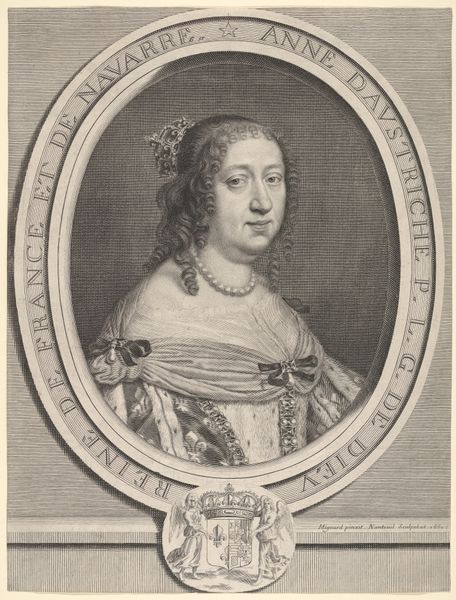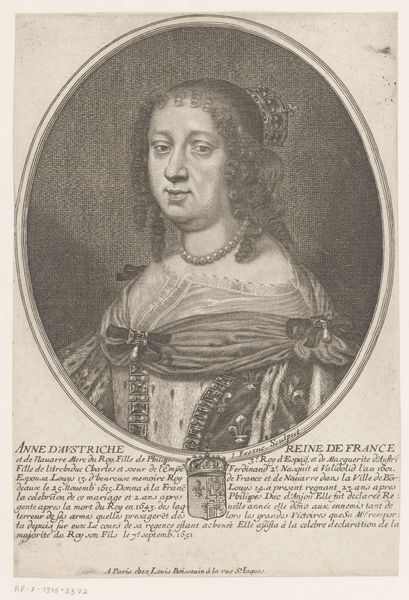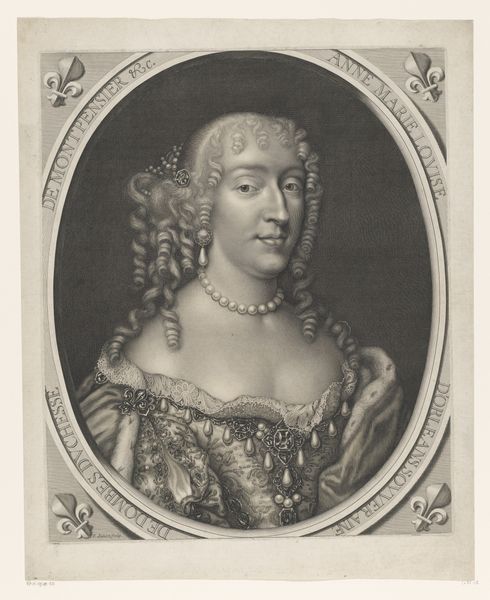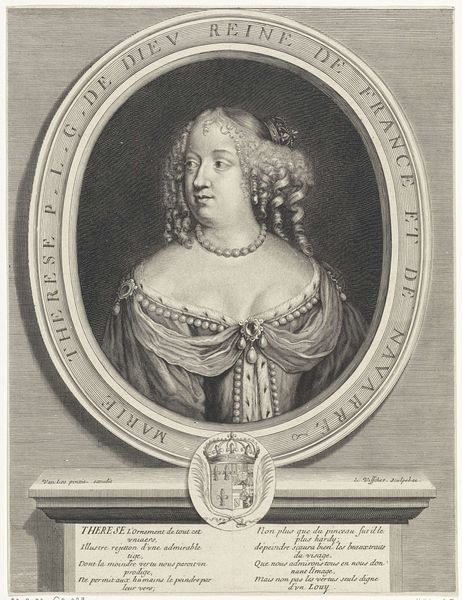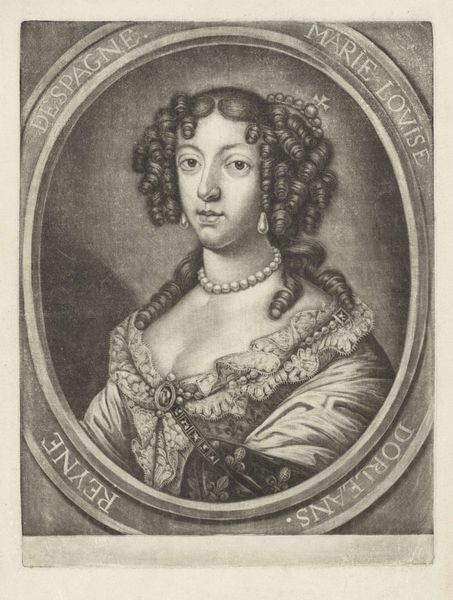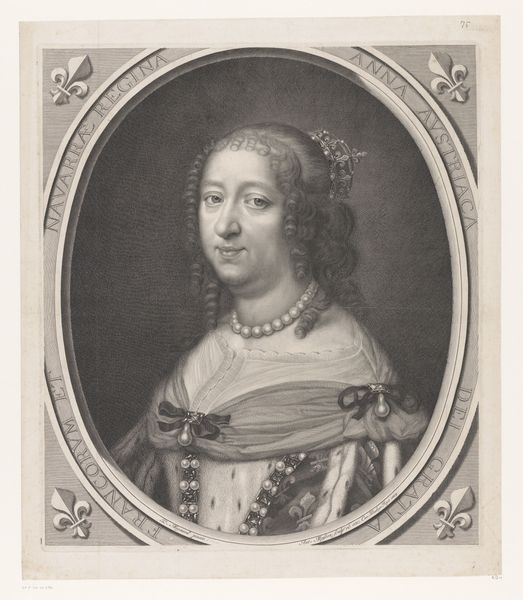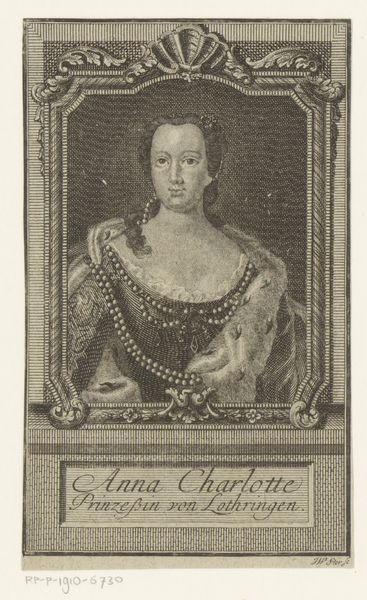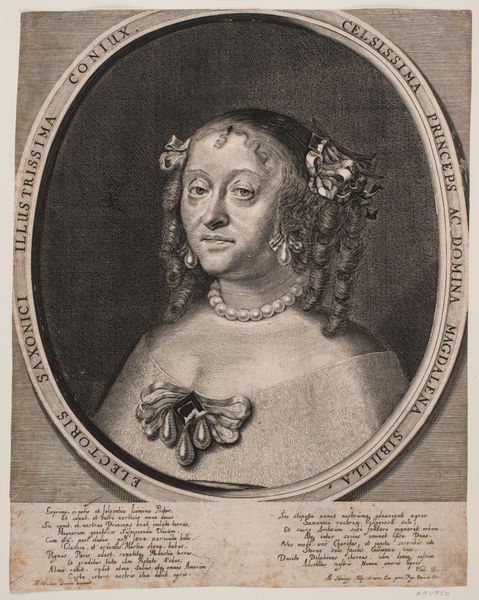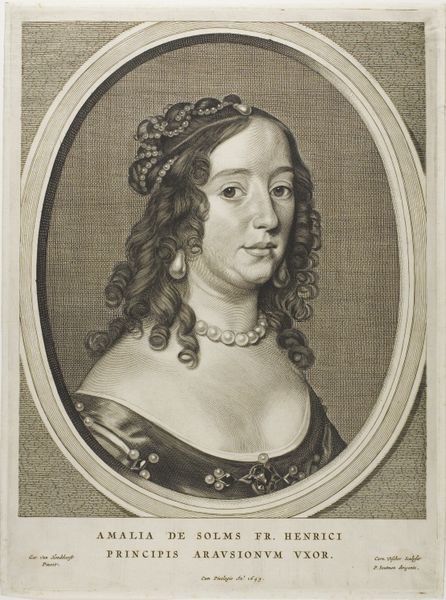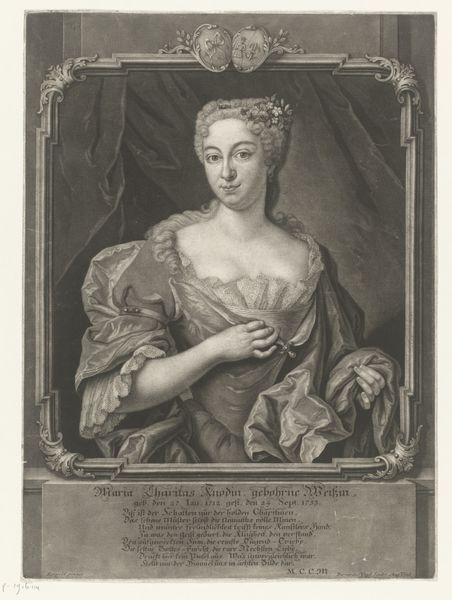
print, engraving
#
portrait
#
baroque
# print
#
history-painting
#
engraving
Dimensions: 12 5/8 x 9 5/8 in. (32.07 x 24.45 cm) (image)13 1/16 x 10 in. (33.18 x 25.4 cm) (sheet)
Copyright: Public Domain
Editor: This is Robert Nanteuil’s "Portrait of Anne of Austria," created around 1660. It's an engraving, so it's monochrome and very detailed. The queen seems powerful, but the small oval frame around her portrait makes her feel a bit confined. What do you see in this piece, from your perspective? Curator: Beyond the immediate representation of regal power, I see a strategic construction of identity meant to cement a monarchical image, particularly potent in a period of immense social upheaval and religious conflict. The Baroque era, as you know, wasn't just about grand gestures. It was about controlling perception. Editor: Can you expand on that a bit more? Curator: Absolutely. Consider Anne's position as a woman in power. The portrait normalizes and even elevates her authority in a patriarchal society, but does it also contain underlying anxieties about female rule? How do the symbols – the crown, the royal robes – both reinforce and potentially complicate our understanding of her power? Editor: That’s an interesting angle, thinking about the context in terms of gender and power. I was initially just considering her role as Queen, but these details speak to much larger themes. Curator: And how does the act of printing – creating multiple copies of this image – contribute to the dissemination of this carefully crafted identity? Was this simply a portrait, or a form of early propaganda? This image then becomes less about Anne as an individual, and more about her symbolism. Editor: I hadn’t thought about the distribution aspect. I’ll have to remember to consider art not as just a singular object but as part of broader cultural processes. Curator: Precisely. Thinking about these historical undercurrents can enrich how we interact with art, shifting away from aesthetic judgements toward deeper historical awareness. Editor: That gives me a lot to think about. Thanks!
Comments
No comments
Be the first to comment and join the conversation on the ultimate creative platform.
